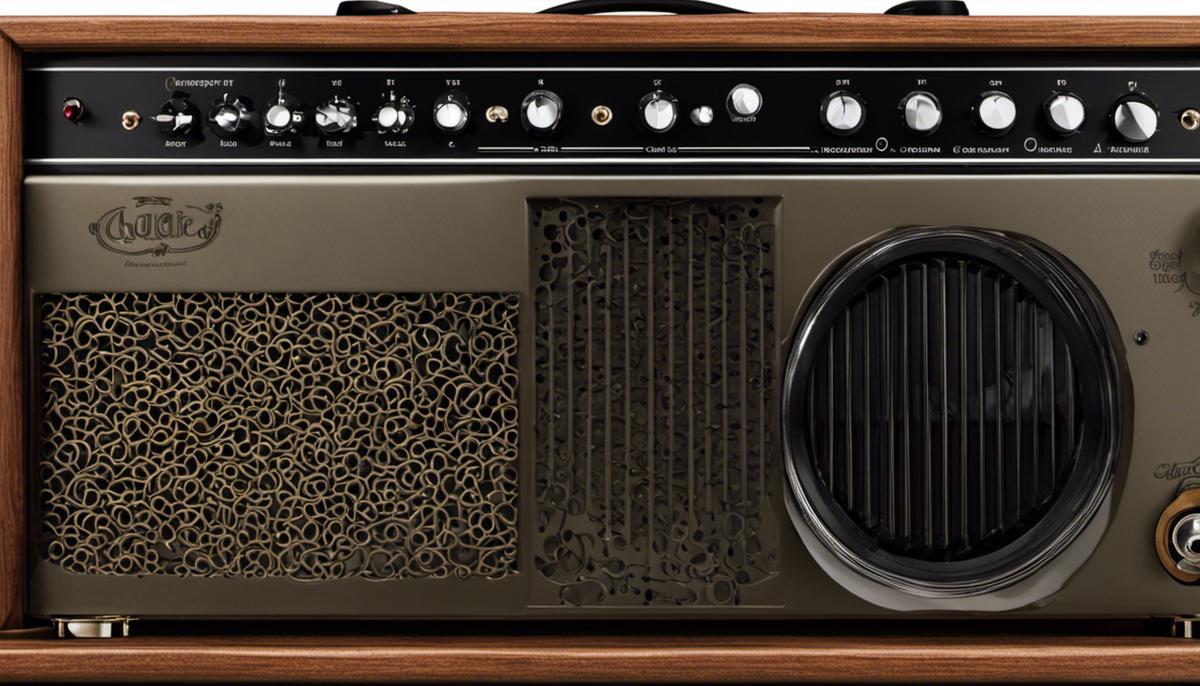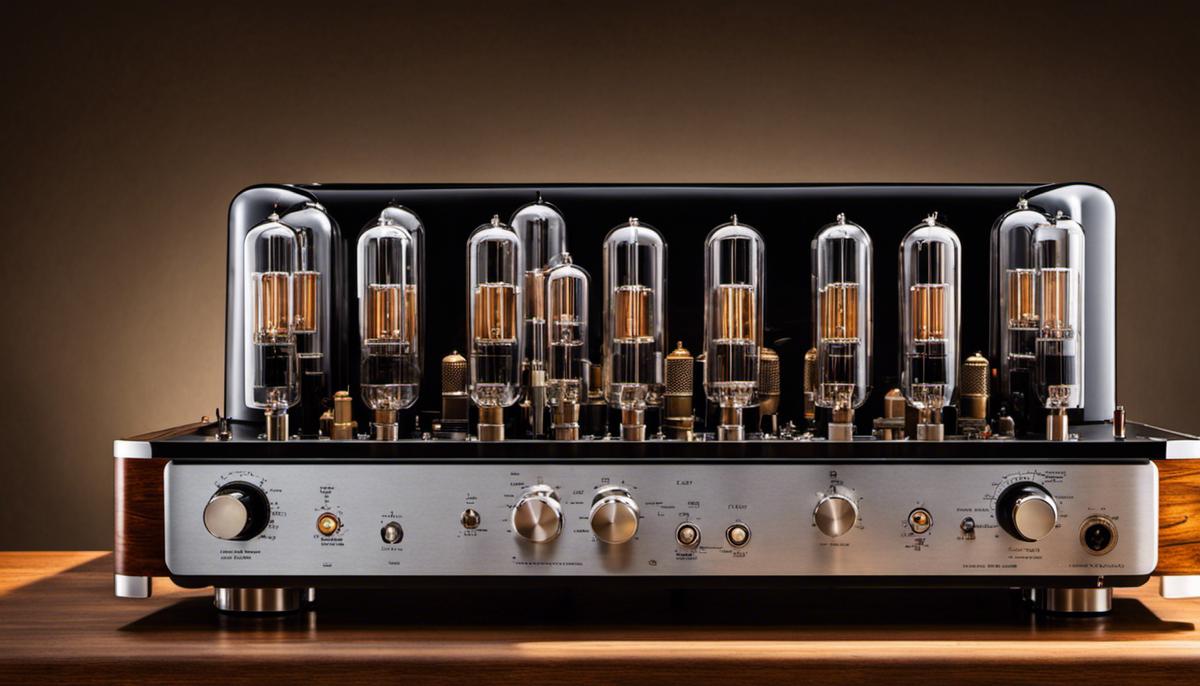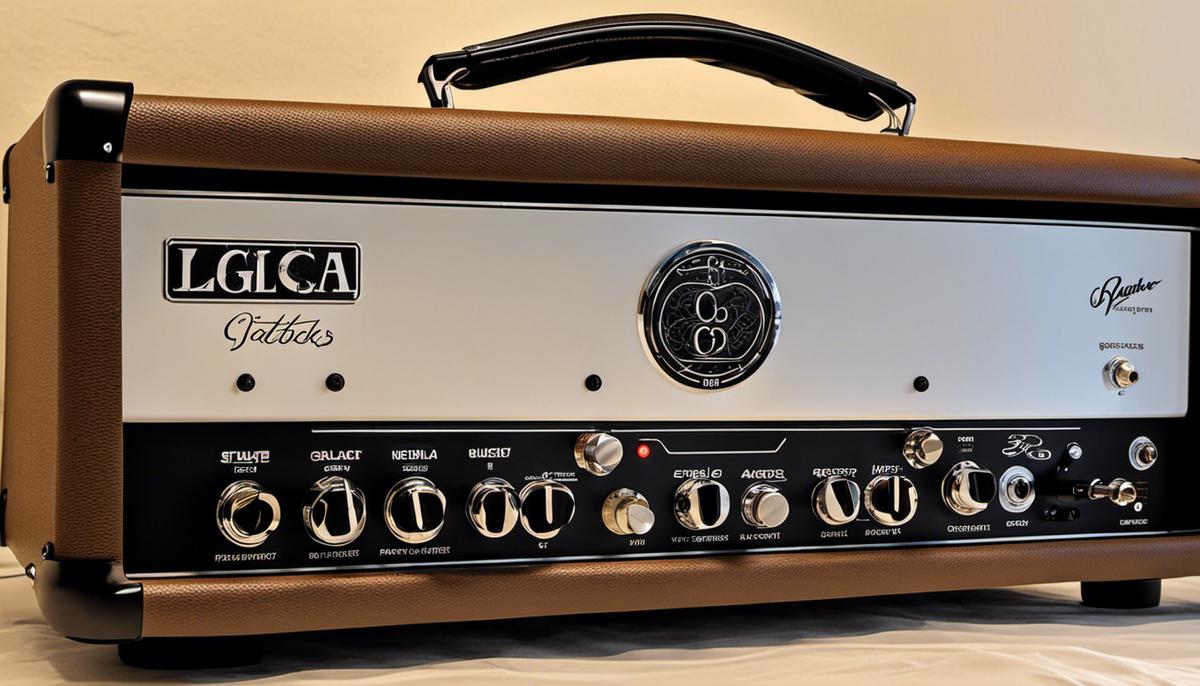
Music and technology intersect beautifully in the majestic world of guitar amplifiers. These devices, an integral part of any electric guitar setup, powerfully shape the sound and inflection of the guitar, creating a sonic landscape that’s rich, vibrant, and uniquely expressive. This exploration plunges into the fascinating heart of guitar amplifiers, illuminating their core components and operational structures. Whether traditional tube amplifiers praised for their warm, rich tones, steadfast solid-state amplifiers, hybrid amalgams, or high-tech digital behemoths, each type of amplifier adds a distinct color to the musical palette.
Components and Operation of Guitar Amplifiers
Basic Components of a Guitar Amplifier
Broadly speaking, a typical guitar amplifier comprises of several key components, including the preamp, the power amplifier, and the speaker. The preamp is the first stage of amplification in a guitar amplifier. It takes the weak electrical signal from the guitar and amplifies it to a level that can drive the power amplifier.
The power amplifier is the second stage of amplification and its purpose is to increase the signal power so as to produce a louder sound. The speaker, on the other hand, translates the amplified electrical signal into physical vibrations that result in audible sound.
Additional components such as the tone control circuit come into play in most modern amplifiers. This involves treble, bass and mid-range controls, which help adjust the balance of these frequencies in the output sound. Some models also feature effects loops and reverb circuits, which allow the addition of sound effects.
Operation of Guitar Amplifiers
After being plucked, the guitar’s strings send a small electric signal through the guitar’s pickup, transferring the vibrations into an electrical signal. This signal is initially quite weak and needs amplification, which is where the preamp comes in.
The preamp boosts the signal strength from the guitar and prepares it for the next stage of amplification. The signal is then passed onto the power amplifier which boosts the signal once more, this time making it strong enough to move the speaker cones and generate sound.
Shaping the Sound
The tone control circuit in a guitar amplifier plays a crucial role in shaping the sound. Using the treble, bass, and mid-range controls, you can adjust the balance of high, low, and mid-range frequencies in the output. This allows players to customize their sound to suit their playing style or the genre of music they’re playing.
In addition, the effects loop and reverb circuits serve to add depth and space to the sound. The effects loop allows the signal to be processed by other effects units before being sent to the power amp, while the reverb circuit simulates an echo effect, giving a sense of spaciousness to the sound.
Exploring the Different Guitar Amplifiers
The world of guitar amplifiers is diverse, typically categorized into tube amps, solid-state amps, hybrid amps, and digital amps. Characterized by their vacuum tubes, tube amps are immensely preferred for their warm, dynamic, and bio-like tone. Conversely, solid-state amps utilize semiconductor circuits and offer advantages like reliability and a crisp tone.
Hybrid amps, as their name implies, fuse both tube and solid-state technologies, managing to harness the tonal richness of tube amps and the sturdy reliability of solid-state amps. On the other hand, digital amps incorporate the use of digital signal processing to imitate the sounds of tube, solid-state, and other amplifier types.
Playing its own part in shaping the sound produced by the guitar, each amplifier type offers musicians the chance to fine-tune their sound to their individual tastes, the nature of their playing, and their chosen music genre.

Tube Amplifiers
Demystifying Tube Amplifiers
Renowned for their robust, rich tones and dynamic receptivity, tube amplifiers are a classic form of guitar amplifier. They use vacuum tubes as the central components for amplifying an electric guitar’s sound. Tube amplifiers’ main parts consist of a preamplifier, a power amplifier, and a speaker, collaborating to produce the iconic output.
Construction of Tube Amplifiers
Construction-wise, tube amplifiers generally follow a two-step amplification process. The preamplifier stage uses smaller tubes to amplify the weak signal from the guitar to a manageable level. Following this, the power amplifier stage uses larger tubes to boost the signal further, driving the speakers to create the final output. The power tubes are crucial for shaping the amplifier’s distinctive tonal characteristics.
The key component of a tube amp, the vacuum tube, primarily consists of three parts: the cathode, which produces electrons; the grid, which controls the flow of those electrons, and the anode, which collects the electrons. When a guitar’s signal enters the tubes, it triggers fluctuations in this flow, the variations of which are then amplified to produce sound.
Operation of Tube Amplifiers
In operation, tube amps inherently produce a “warm” and “rich” tone, a characteristic beloved by many guitarists. This primarily arises due to the way vacuum tubes handle electrical signals. They react organically to high signal levels, leading to a natural form of distortion which adds depth and character to the sounds, making them feel more “live”. In addition, tube amps also exhibit excellent dynamic responsiveness, meaning they change their output tone based on the intensity of the input signal. This allows guitarists to control the degree of distortion with their playing intensity, rather than solely relying on volume and gain controls.
Professionals’ Choice: Tube Amplifiers
Tube amplifiers are favored by many professionals due to their warm tonality and excellent dynamic response. These amps offer a wide dynamic range and generate ‘organic’ distortions when driven hard, coloring the guitar sound in a way that many musicians find musically inspiring. Additionally, the tubes in an amplifier can be swapped out and replaced, allowing users to customize their tone to a considerable extent.
Despite their distinct advantages, tube amplifiers do have their share of challenges. They require regular maintenance, can be more fragile compared to their solid-state counterparts, and consume more power. But for many professional guitarists and audiophiles, these challenges are more than worth the unique audio experience that a tube amplifier can offer.
In Summary
The allure of tube amplifiers is perpetuated by the unique warmth and richness of sound they produce, contributing to their continued desirability among musicians. However, the ultimate choice of amplifier comes down to the individual’s unique style and requirements, as musical equipment is largely a matter of personal taste.

Solid State Amplifiers
Diving into Solid State Amplifiers
As we explore further, we encounter solid state amplifiers. These guitar amplifiers utilize semiconductor transistors to amplify signals. The key operation within a solid state amplifier employs a two-step process which starts with a small current or voltage entering a part of the transistor. This, in turn, controls a larger current that navigates through other areas of the transistor.
The Sound of Solid State Amplifiers
Solid state amplifiers are celebrated for their clean, clear, and precise tones. Unlike tube amplifiers that add a natural warmth and distortion to the sound, solid state amplifiers faithfully reproduce the input sound without colouring it. This makes these amplifiers ideal for genres such as jazz, funk, pop, and any other music styles where clean, crisp tones are desired.
In terms of volume control, solid state amplifiers offer a linear volume progression, which means that the tone stays the same throughout all volume levels. This is in contrast to tube amplifiers which tend to warm up and break into distortion as you turn the volume up.
An Overview: Solid State and Tube Amplifiers
Understanding the difference between solid-state and tube amplifiers is crucial. The principal distinction lies in their construction. Tube amplifiers rely on vacuum tubes to amplify the signal, while solid-state amplifiers use semiconductors in their design. Inherently, solid state amplifiers tend to be less pricey, more robust, and demand less maintenance than tube versions.
Sound quality varies between the two, with tube amps being cherished for their ‘warmer’, vintage tone, attributed to their harmonic distortion capacity. In contrast, solid state amplifiers accurately replicate the original sound, making them ideal for musical styles seeking a crisper, cleaner tone.
Making a choice between a solid-state and a tube amplifier ultimately boils down to personal taste, the musical genre in play, and the specific sound the musician is aiming for.

Hybrid Amplifiers
The Best of Both: Hybrid Amplifiers
Hybrid amplifiers, marrying the top features of both tube and solid state amplifiers, resonate with many guitarists. They have a special operation mechanism that combines the warmth of tube amplifiers with the dependability and adaptability of solid state models.
Hybrids function by integrating a tube in the preamplifier phase and solid-state technology in the power phase. This arrangement, often known as a tube preamp, allows the tube section to shape the tone and create the desired distortion. After leaving the tube preamp, the signal heads to the solid state section, where power is added, resulting in a rich, warm tone with both resonance and bite.
Hybrid amplifiers bring unique qualities to the table, making them attractive to guitarists. They allow guitarists to experience the authentic tube tone without the high maintenance and vulnerability of fully tube-powered amplifiers. Hybrids are less prone to uneven sound than full tube amps. They also operate at lower temperatures and are generally more reliable and durable.
Tonally, hybrid amps offer great flexibility. The tube preamp confers a lot of warmth, depth, and intricacy, traits favored by blues and rock musicians. Simultaneously, the unaltered output from the solid state power amp is appreciated by jazz and funk players.
The Appeal of Hybrid Amplifiers
In the world of guitar amplification, hybrid amps strike a unique balance. People who appreciate the classic tube sound but desire the convenience, dependability, and budget-friendly nature of solid state amps gravitate towards hybrids. These amps are reliable and sturdy, making them perfect for touring musicians who need consistency. Studio musicians may choose them for their tonal diversity. Whether you’re an amateur just starting out or a seasoned professional, hybrid amps, with their wallet-friendly prices, present an appealing choice for a wide array of musicians.

Modeling (Digital) Amplifiers
Modeling (Digital) Amplifiers: A Blend of Old and New
Stepping into the future of guitar sound, modeling or digital amplifiers work as a modern bridge connecting the past and present of amplifier technology. These amps stand apart from their solid-state and tube siblings, utilizing a different operational method: they digitally replicate the sound of other amplifiers. The process involves detailed analysis of the classic circuits used in both tube and solid state amps, followed by a digital reconstruction. With this fusion of digital design and hardware, these amps can accurately emulate the sound and response of any classic or contemporary amplifier.
A Universe of Sounds at Your Fingertips
One of the most appealing aspects of digital modeling amps is their vast flexibility. At their core, these amplifiers are mathematical models of real, physical amplifiers. But apart from that, they also feature various onboard effects like reverb, delay, chorus, and more. They often permit users to save presets for specific tones, enabling a seamless transition between sounds in a live performance setting with just a simple button press. These amps propel the potentials of playing and recording by offering a universal platform carrying a multitude of sounds and effects.
The Complexity: Navigating a Digital Landscape
While flexibility is one side of the modeling amplifier’s allure, it also breeds complexity. With the extensive selection of tones and the power to fine-tune to minute detail, these amplifiers require a higher level of understanding compared to conventional amplifiers. This introduces to the guitarist a learning curve often associated with software and digital equipment. Users, especially those transitioning from traditional amps, usually spend a good deal of time exploring and learning how to use these amplifiers effectively.
Appealing to the Modern Musician
Modeling amplifiers resonate particularly well with a specific subset of musicians. They are especially appealing to musicians who prioritize versatility and are in regular need of a diverse array of tones. Additionally, musicians who appreciate the convenience of digital technology, such as the ability to save presets or quickly alter tone settings, often favor these amps. Their lighter weight, lower maintenance, and generally more affordable price compared to tube amps also make them a practical choice for both beginner level musicians and touring professionals.
Tonal Authenticity: Capture Every Era
One of the constant endeavors in the world of guitar amplifiers has been the pursuit of tonal authenticity. Digital modeling amplifiers aim to encapsulate a wide array of amplifier sounds and characteristics, therefore, they strive to replicate as faithfully as possible the tones of classic and modern amplifiers. Improvements in digital re-modeling technology have brought these amps closer to their goal of accurate mimicry, allowing users to capture the specific eras and genres of guitar tones with ease.
Overall, modeling amplifiers embody the convergence of past iconic tones and future technology, delivering a platform that offers versatility, authenticity, and complexity within the sphere of guitar amplification.

As we navigate through the diverse world of guitar amplifiers, it becomes clear that each type revered for its unique characteristics and utility. The vintage appeal of tube amplifiers, reliability of solid-state amplifiers, innovative fusion in hybrid amplifiers, and technological advancement in digital amplifiers, all contribute to an enriched sonic experience. Whether you’re a professional musician or a passionate hobbyist, understanding these devices helps in taking a step closer to achieving your perfect sound – a complex endeavor that’s as rewarding as it is challenging. Life without music would indeed be a mistake, and carving out your ideal soundscapes with the right amplifier is certainly a high note in any guitarist’s journey.
Comments are closed.